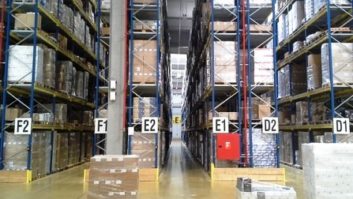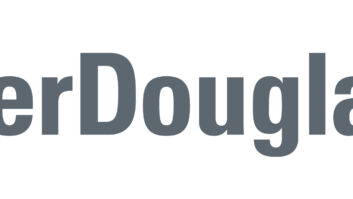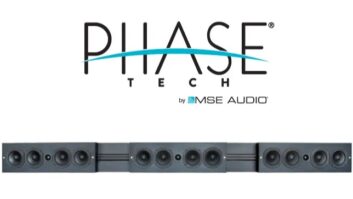Revenues, Number Of Jobs, Average Price Tag All Rising
The custom-install hit the trifecta for three years consecutive years in the U.S. and Canada, CEDIA found in its annual survey of installation companies.
Average gross revenues, the number of completed jobs, and the average price tags of those jobs will grow for the third consecutive year in 2015, based on the forecasts of surveyed A/V installers and electronic systems contractors.
Among surveyed installation companies of all types, average gross revenues will rise in 2015 for the second consecutive year. Surveyed companies included security installers, electricians, and IT companies.
“2015 is not an aberration,” said Dave Pedigo, CEDIA’s senior director of learning and emerging technologies. “It is the continuation of a three-year trend that shows our industry has not only weathered the Great Recession but is also thriving and creating more opportunities for our members to take on more projects, hire new employees, and grow their businesses.”
Although a “glut of inexpensive components” is turning up on retail shelves, “consumers are selecting new higher end technologies such as Ultra HD/4K televisions and smart home components that tie their entertainment, lighting, control and security systems together,” he said.
The availability of low-cost solutions at retail is “a positive force in our industry” because it increases awareness and demand, he said. “Integrators are absolutely buried in work.”
Though demand for pricier custom solutions is up, the systems that installers are building aren’t meant just for the top 1 percent of households, the survey also found. The price of the median home theater system installed in 2014 by A/V installers and systems integrators was $16,666, and the median audio installation was $11,000.
Here are some of the key trends uncovered in the survey, conducted by Parks Associates:
Gross revenues: After falling in 2011 and 2012, average gross revenues for A/V installers and systems integrators grew in 2013 and 2014, and they’re forecast to grow in 2015 to $2.54 million, up from 2014’s $2.2 million. The numbers include commercial installations, but the respondents did 74 percent to 75 percent of their business in the residential sector.
The 40 percent jump in 2014, however, might be inflated because a disproportionate percentage of small system integrators might have reported 2013 sales, CEDIA said. “While obvious that significant growth did occur in 2014, we urge considering the actual growth rate of 40 percent as maximum,” CEDIA noted.
Revenues from residential projects: With the housing market improving after the imploding in the mid 2000s, A/V installers and integrators are deriving a growing percentage of revenue from residential jobs. In 2010, these installers derived 69 percent of their revenues from residential installs, but that percentage hit 75 percent in 2014. It’s expected to remain the same in 2015.
Residential projects completed: A/V installers and integrators expect to compete an average of 66 residential projects in 2015, up from 59 in 2014, 51 in 2013, and 45 in 2012. The survey also found the number of outdoor-entertainment projects on the rise. A/V installers and integrators completed an average of 12 outdoor jobs in 2014, and they expect that to rise to 17 in 2015. Outdoor entertainment could become the next home theater, Pedigo said.
Revenues by product type: Much of the revenue generated by residential projects comes from audio, video and control systems, the survey found. Among A/V installers and integrators, home theater and media-room installs accounted for an average of 19 percent of their residential revenues, followed by distributed audio at 16 percent, control systems at 14 percent, and distributed-video systems at 9 percent. No other category came close to 10 percent.
A/V system costs: The price of the average home theater installed by A/V installers came to $16,100 in 2010, but that rose to more than $33,000 in 2014, and respondents expect that to rise to $39,000 in 2015.
The average price of a distributed-audio system was $10,000 in 2010 but hit between $17,000 and $18,000 in 2014, Pedigo said.
What they install: Though audio, video and home control account for 58 percent of their residential revenues, many A/V installers and integrators install just about anything.
In 2014 and 2015, 90 percent of A/V installers and integrators said they completed jobs that included lighting-control systems, and 90 percent said they installed climate-control systems. Sixty-nine percent installed motorized window treatments during the period, and 54 percent installed intercoms.
Among security and energy-management products, 84 percent of A/V installers and integrators installed video-surveillance systems, 77 percent installed IP security cameras, and 49 percent installed security systems. Thirty percent installed energy monitoring and management systems, which track energy use to the electrical-outlet level.
Four percent of the installers installed home health monitoring systems in 2014 and 2015.
In the IT/home network segment, 88 percent installed structured-wiring systems during the period, and 85 percent sold IT, computer and home-network products and services.
What they will add: Many respondents who haven’t been involved in a specific category plan to get involve within two years.
Forty-one percent of dealers not offering home control systems intend to offer those within 24 months, and 37 percent who don’t currently sell IP security cameras will do so. Twenty-four percent of dealers not offering outdoor entertainment systems intend to add those, and 30 percent will add motorized window treatments and energy monitoring equipment.













